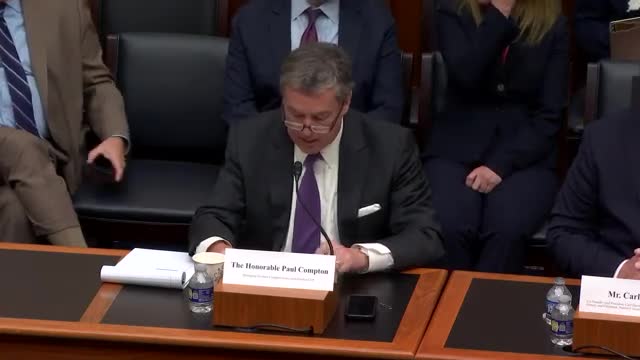Regulatory red tape stifles affordable housing development

This article was created by AI summarizing key points discussed. AI makes mistakes, so for full details and context, please refer to the video of the full meeting. Please report any errors so we can fix them. Report an error »

In a recent government meeting, officials highlighted the significant burden of federal, state, and local regulations on the housing market, likening them to the ropes that restrained Gulliver in Jonathan Swift's classic tale. The discussion centered on how these regulatory impediments stifle market forces and entrepreneurship, ultimately leading to a scarcity of affordable housing in the United States.
One speaker emphasized that the cumulative effect of red tape—not just the individual requirements—creates substantial costs and delays for housing developers. These costs can be categorized into three main areas: direct expenses for professionals navigating regulations, the time value of money associated with delayed projects, and the increased risks and costs that arise from prolonged development timelines. The speaker warned that such delays can lead to higher interest rates, frustrated investors, and missed opportunities, exacerbating the housing crisis.
The meeting also addressed the need for reform in local regulations, which have reportedly tripled over the past 40 years. This surge in regulation coincided with the economic pressures following the 1986 Tax Act, which inadvertently pushed many individuals and small businesses out of the housing market. A key recommendation was to restore investment incentives for individual investors and closely held businesses, thereby enhancing local accountability in the regulatory process.
Additional suggestions included revisiting the application of the National Environmental Protection Act to Federal Housing Administration loans, abolishing mixed wage decisions, and reconsidering choice-limiting activities that further complicate housing development.
The discussion underscored the urgent need for regulatory reform to alleviate the burdens on home builders and improve housing affordability, as industry representatives voiced concerns that existing regulations hinder their ability to meet housing demands.
One speaker emphasized that the cumulative effect of red tape—not just the individual requirements—creates substantial costs and delays for housing developers. These costs can be categorized into three main areas: direct expenses for professionals navigating regulations, the time value of money associated with delayed projects, and the increased risks and costs that arise from prolonged development timelines. The speaker warned that such delays can lead to higher interest rates, frustrated investors, and missed opportunities, exacerbating the housing crisis.
The meeting also addressed the need for reform in local regulations, which have reportedly tripled over the past 40 years. This surge in regulation coincided with the economic pressures following the 1986 Tax Act, which inadvertently pushed many individuals and small businesses out of the housing market. A key recommendation was to restore investment incentives for individual investors and closely held businesses, thereby enhancing local accountability in the regulatory process.
Additional suggestions included revisiting the application of the National Environmental Protection Act to Federal Housing Administration loans, abolishing mixed wage decisions, and reconsidering choice-limiting activities that further complicate housing development.
The discussion underscored the urgent need for regulatory reform to alleviate the burdens on home builders and improve housing affordability, as industry representatives voiced concerns that existing regulations hinder their ability to meet housing demands.
View full meeting
This article is based on a recent meeting—watch the full video and explore the complete transcript for deeper insights into the discussion.
View full meeting